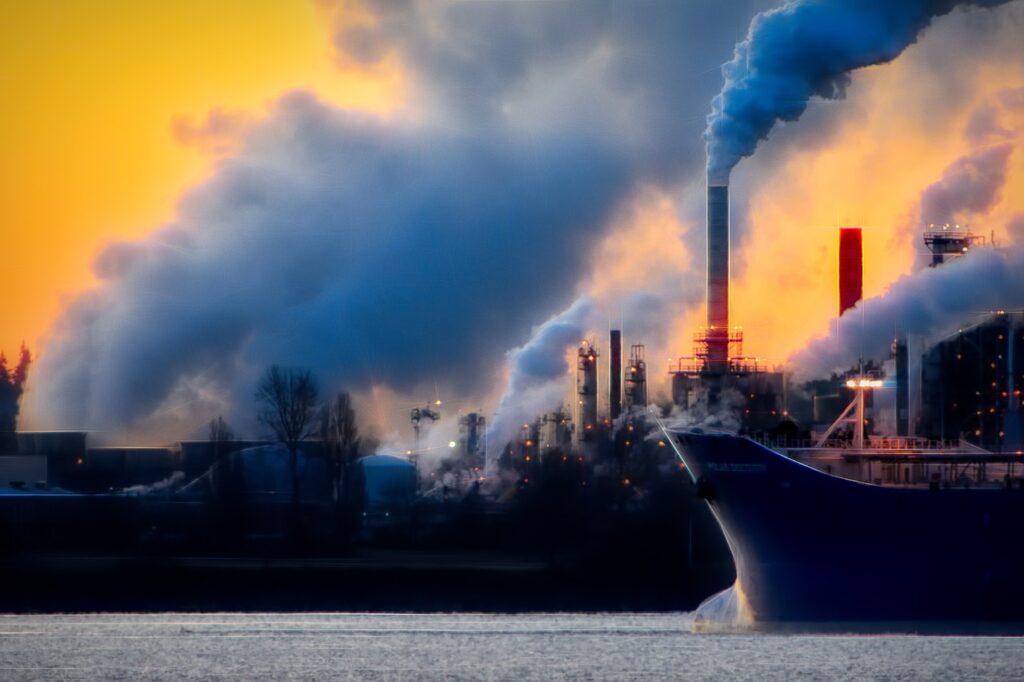In recent years, a noticeable rise in temperature has been experienced not just in India, but across the globe. The increasing heat levels, extended summers, and rising health concerns are alarming signs of a global climate crisis. This blog explains why temperatures are increasing, the major causes behind it, the effects of pollution, and what can be done to prevent heat-related issues, especially during summer.

Why Is Temperature Increasing Globally?
The earth’s temperature is rising due to global warming, which is driven by human activities. The following are the major causes:
Greenhouse gas emissions from industries, vehicles, and burning fossil fuels trap heat in the atmosphere.
Deforestation reduces the number of trees that absorb CO₂, causing more heat to remain.
Urbanization and concrete jungles increase heat retention, creating urban heat islands.
Pollution from factories and vehicles adds harmful particles and gases that trap more sunlight.
🌐 More on global warming here: NASA Climate Change
Why Is 🇮🇳 India Facing Extreme Heat?
India is experiencing harsher summers due to several regional factors:
Overpopulation causes higher energy consumption and waste generation.
Vehicular emissions are rising with increasing car ownership.
Massive construction projects increase dust and heat-absorbing surfaces.
Declining green cover in cities reduces natural cooling.
Poor waste management leads to burning garbage, releasing toxic gases.
🌐 Read more at: India’s Climate Crisis – Down to Earth

Effects of Pollution on Temperature
Pollution plays a big role in rising temperatures. Here’s how:
Air pollution traps heat by increasing particulate matter and gases like methane and CO₂.
Water pollution impacts rainfall patterns, which can lead to more droughts and hotter summers.
Land pollution affects soil quality, reducing greenery that helps cool surroundings.
Industrial pollution adds greenhouse gases directly into the atmosphere.
🔥 The result? Longer heatwaves, droughts, and serious health risks.
How to Prevent Heat-Related Issues in Summer
Prevention starts with awareness and small daily actions.
Q. What to Do During Summer
Stay hydrated: Drink at least 3-4 liters of water daily.
Wear light-colored, loose clothes made of cotton.
Avoid going out between 12 PM to 4 PM (peak heat hours).
Use hats, sunglasses, and umbrellas to block direct sunlight.
Keep windows open for ventilation if no air-conditioning is available.
Use fans with cross-ventilation to reduce heat indoors.
🌱 Planting trees around homes helps create natural cooling.
Q. What to Eat in Summer
Choosing the right food keeps the body cool and energized.
Fruits rich in water content: watermelon, cucumber, oranges, muskmelon.
Curd and buttermilk: Cool the stomach and boost digestion.
Coconut water: Hydrates and balances electrolytes.
Leafy vegetables: Like spinach and mint.
Avoid oily and spicy food, which increases body heat.
Drink lemon water, sugarcane juice, and herbal teas.
🧊 Eating light meals frequently is better than heavy meals in one go.

Top Hottest Countries in 2024 and Reasons Behind Their Extreme Heat
In 2024, several countries experienced unprecedented heat levels, marking it as the hottest year on record globally. This surge in temperatures is attributed to a combination of factors, including climate change, greenhouse gas emissions, and regional climatic conditions.
1. Mali
Mali recorded an average annual temperature of approximately 28.25°C in 2024, making it one of the hottest countries globally. Its landlocked position in West Africa, coupled with a predominantly desert and semi-arid landscape, contributes to intense solar radiation and minimal rainfall. Reuters+4The Teal Mango+4www.ndtv.com+4www.ndtv.com
2. Burkina Faso
With an average temperature of 28.29°C, Burkina Faso’s tropical savanna climate results in high temperatures year-round. The country’s limited vegetation cover and prolonged dry seasons exacerbate the heat intensity. Vanguard News+1The Teal Mango+1
3. Djibouti
Djibouti experiences an average annual temperature of 28°C. Its location in the Horn of Africa, characterized by arid and semi-arid conditions, leads to consistently high temperatures and low precipitation levels.
4. Qatar
Qatar’s desert climate results in extreme heat, with average annual temperatures around 29.1°C. The country’s flat terrain and urban development contribute to the urban heat island effect, intensifying the heat experienced in populated areas. Vanguard News
5. United Arab Emirates (UAE)
The UAE recorded average temperatures of 28.9°C in 2024. Its desert environment, combined with rapid urbanization and industrial activities, leads to elevated temperatures and increased heat retention in urban centers.
6. Oman
Oman’s average annual temperature stood at 28.68°C. The country’s arid climate, characterized by minimal rainfall and high solar radiation, contributes to its extreme heat conditions. World Population Review
7. Mauritania
Mauritania experienced average temperatures of 27.65°C. Its vast desert landscapes and limited vegetation cover result in high daytime temperatures and significant diurnal temperature variations. www.ndtv.com+1The Teal Mango+1
8. Kiribati
Kiribati, an island nation in the central Pacific, recorded an average temperature of 28.2°C. Its equatorial location leads to consistent solar exposure and warm temperatures throughout the year. World Population Review+2www.ndtv.com+2The Teal Mango+2
9. Tuvalu
Tuvalu’s tropical climate results in an average annual temperature of 28°C. The nation’s low elevation and proximity to the equator contribute to its consistently warm and humid conditions.
10. Benin
Benin experienced average temperatures of 27.55°C in 2024. Its tropical climate, with distinct wet and dry seasons, leads to high temperatures, especially during the dry season. www.ndtv.com
These extreme temperatures are not only a result of geographical and climatic factors but are also intensified by global climate change. The increase in greenhouse gas emissions, deforestation, and urbanization contribute significantly to the rising temperatures experienced worldwide.
Understanding the causes and impacts of these temperature increases is crucial for developing effective strategies to mitigate heat-related issues, especially during the summer months.
How Can We Reduce Global Temperature?

Reducing global warming and heat starts with community and individual efforts:
Use public transport, carpool, or walk/cycle when possible.
Switch to renewable energy sources like solar panels.
Recycle and reuse products to reduce industrial production.
Say no to plastic and opt for eco-friendly alternatives.
Educate others about environmental protection.
Join local environmental drives and tree plantation campaigns.
🌐 Explore climate actions: UN Climate Change
Conclusion
Rising temperatures in India and worldwide are directly linked to pollution, deforestation, and human activities. The impact of this climate change is being felt more each year—through extreme summers, heatwaves, and ecological damage. Preventive measures like sustainable living, dietary adjustments, and eco-friendly choices can help reduce the heat and protect health.
Simple lifestyle changes and collective efforts are the keys to battling climate change and keeping summer bearable. Let’s act now, before it’s too late.
Related Keywords:
global warming, rising temperature, summer heat prevention, India heatwave, pollution effects, what to eat in summer, how to stay cool, climate change, eco-friendly tips, how to reduce body heat.
